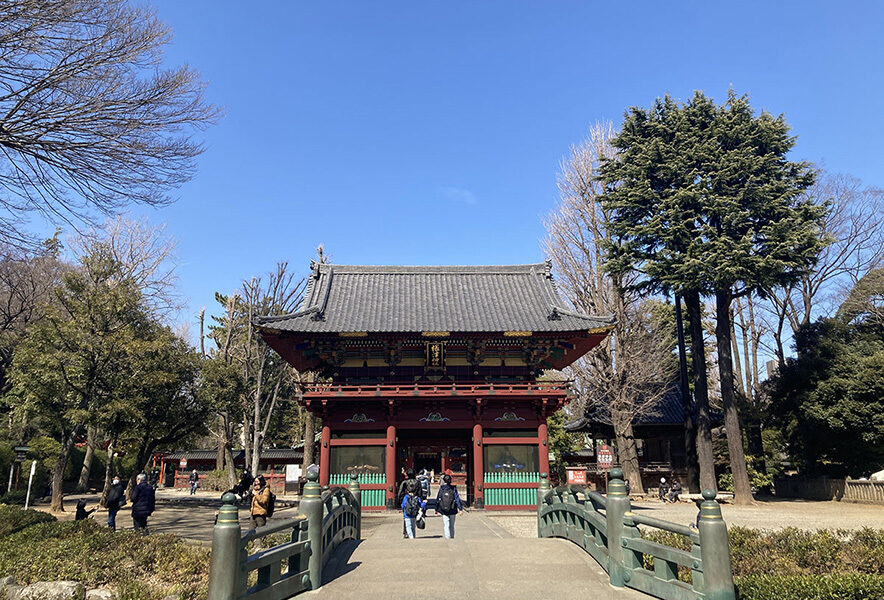Nezu-jinja Shrine is located in Yanesen, a popular old Tokyo downtown area. With all the buildings built during Edo period still intact, it is a valuable shrine designated as a national Important Cultural Property. It is one of the Tokyo 10 Shrines and also one of the most visited energy spots in the city.
It is also known for the mystic atmosphere of the Senbon Torii gate, the azalea garden where about 3,000 azaleas bloom in spring, and as a place where literary giants such as Mori Ogai and Natsume Soseki lived nearby.
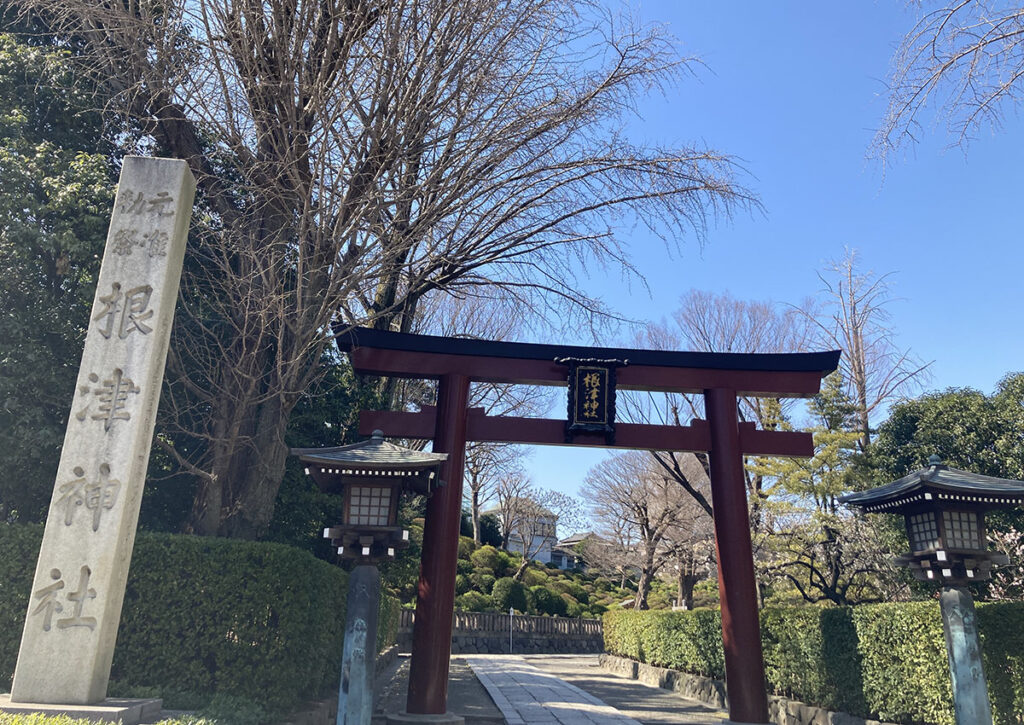
History of Nezu-jinja Shrine
Nezu-jinja Shrine is an ancient shrine said to have been founded about 1,900 years ago by Yamato-Takeru-no-mikoto.
In 1706, the fifth shogun of Edo, Tokugawa Tsunayoshi, built the present shrine and moved it from its original location in Sendagi. At the time of the Meiji Restoration (1868), the Emperor sent an envoy there to hold a prayer for national security.
All seven buildings – the Gongen-zukuri style main shrine, hall of offerings, prayer hall, Chinese-style gate, east gate, see-through fence, and tower gate- are intact, and are designated as national Important Cultural Property.
The statue of Tokugawa Mitsukuni, also known as Mito Komon, is said to be the model of the zuishin (attendant deity) statue which sits on the tower gate.
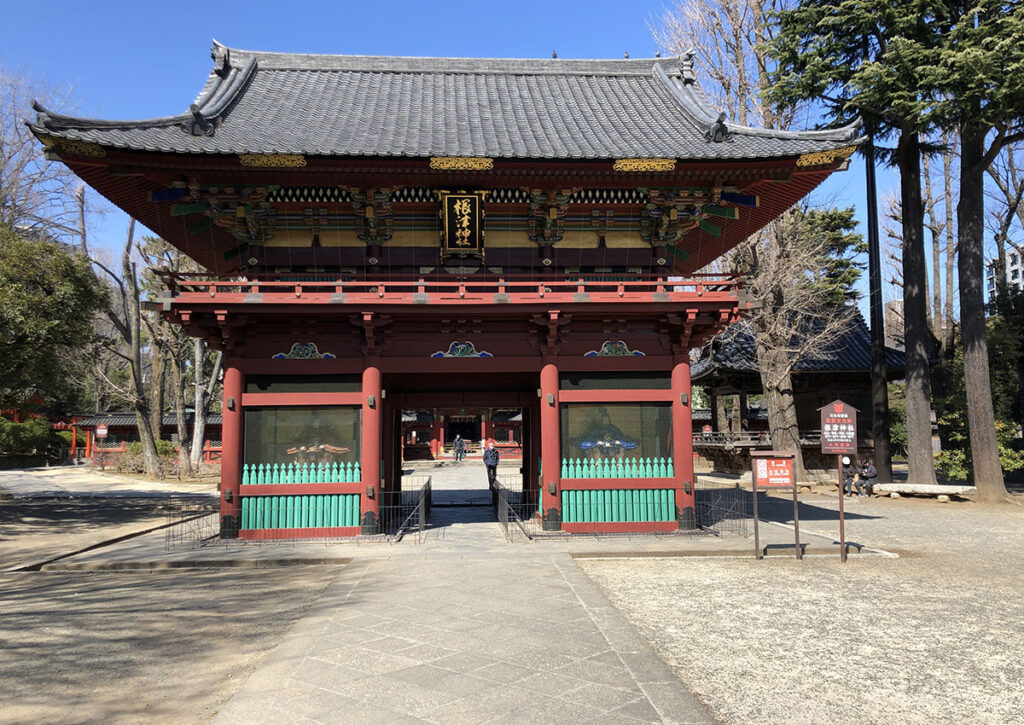
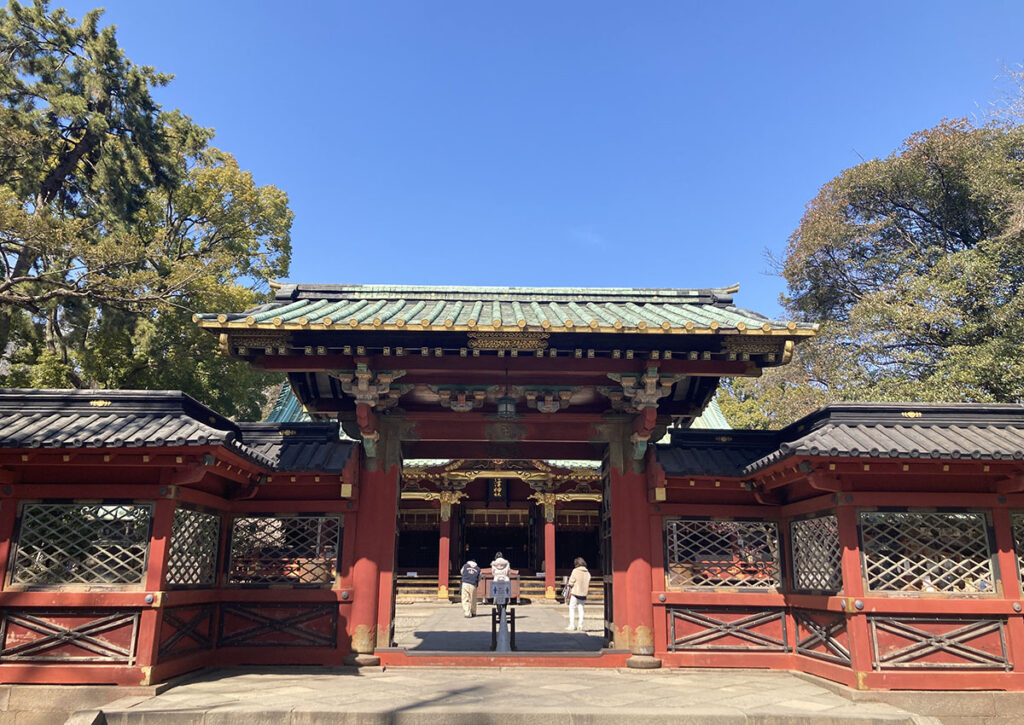
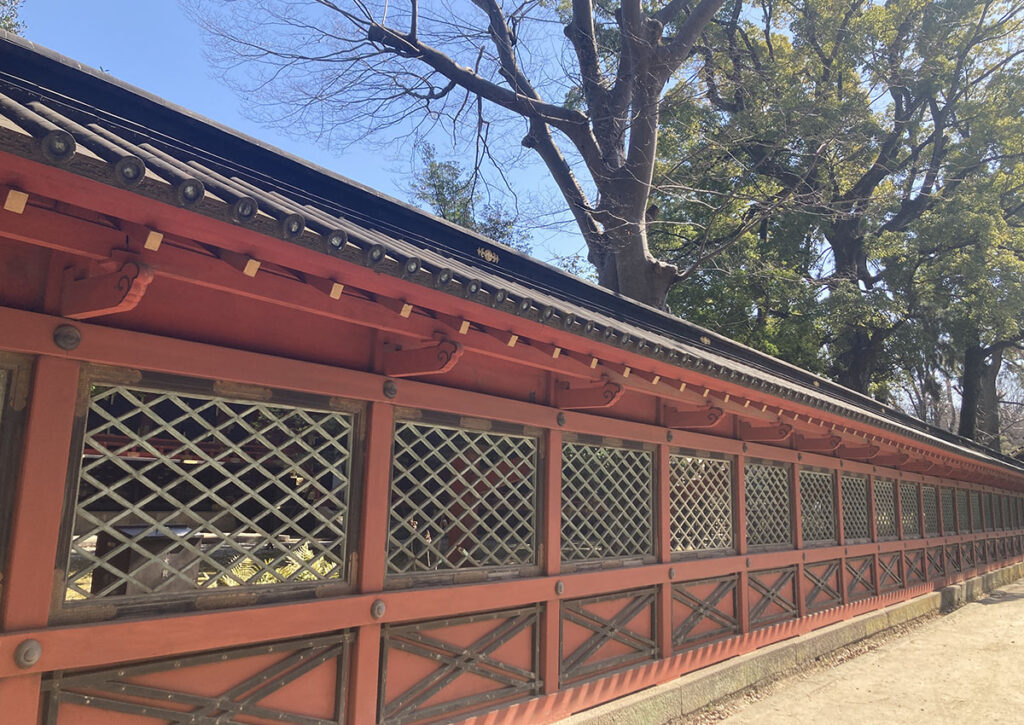
The main deities of Nezu Shrine are Susano’o-no-mikoto, Oyamakui-no-mikoto, and Hondawake-no-mikoto. In addition, Okuninushi-no-mikoto and Sugawara Michizane are also enshrined.
It is said to bring ‘protection from evil’ as Susano’o-no-mikoto is enshrined, and also ‘good marriage’ and ‘business prosperity’ as Okuninushi-no-mikoto is enshrined. It is also where students go to ‘pray to pass examination’ , since Sugawara Michizane, the god of learning is also enshrined.
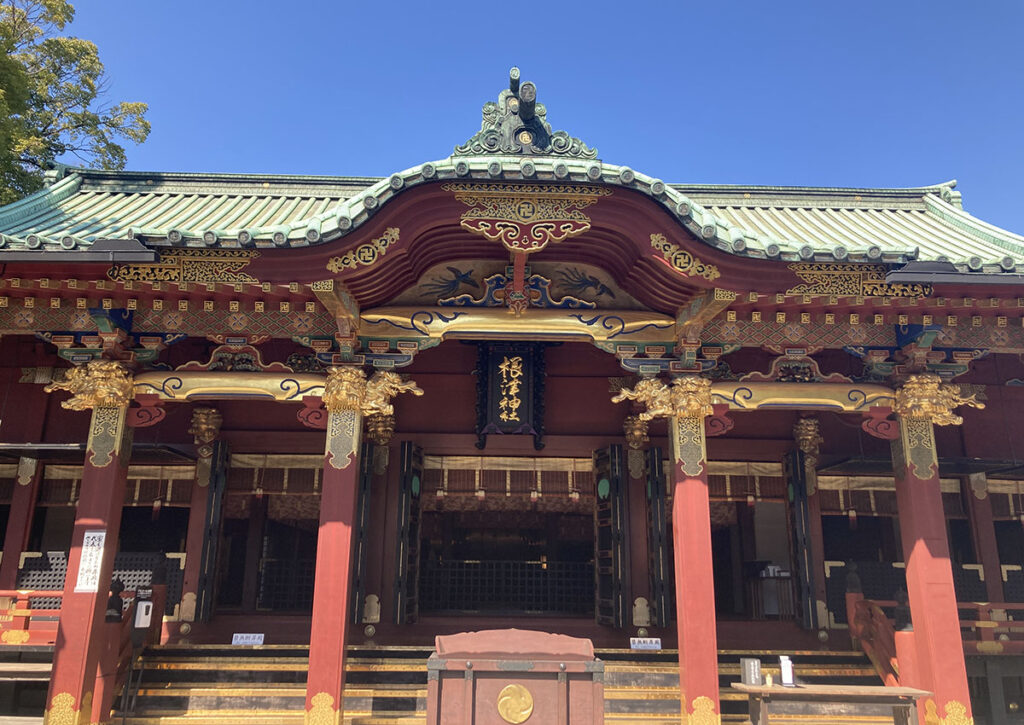
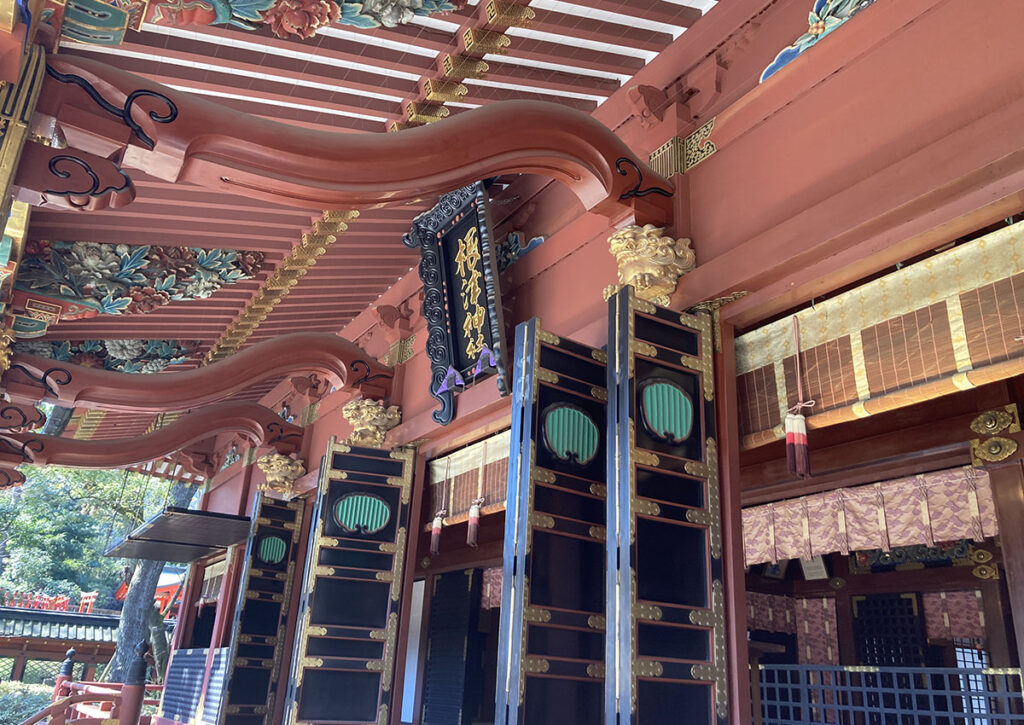
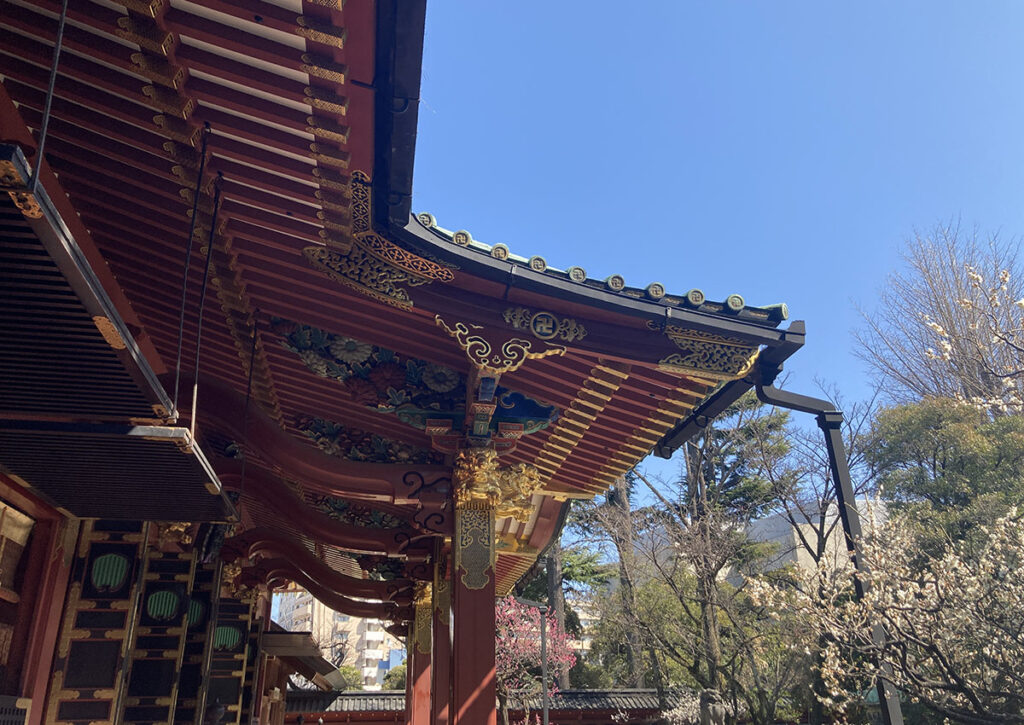
Sights to see of Nezu-jinja Shrine
Senbon Torii Gates
The Senbon (thousand ) Torii gate that leads to Otome Inari is also a popular place. The row of vermilion torii gates is so majestic that you will want to take pictures from various angles.
These torii gates were dedicated as a gratitude for wishes that came true, and each one contains the wish of the person who dedicated it.
It is said that if you pass through the gate from north to south, you will be rid of evil spirits. While passing through the tunnel of torii gates, you are sure to be soothed by the solemn atmosphere that is so unlike Tokyo.
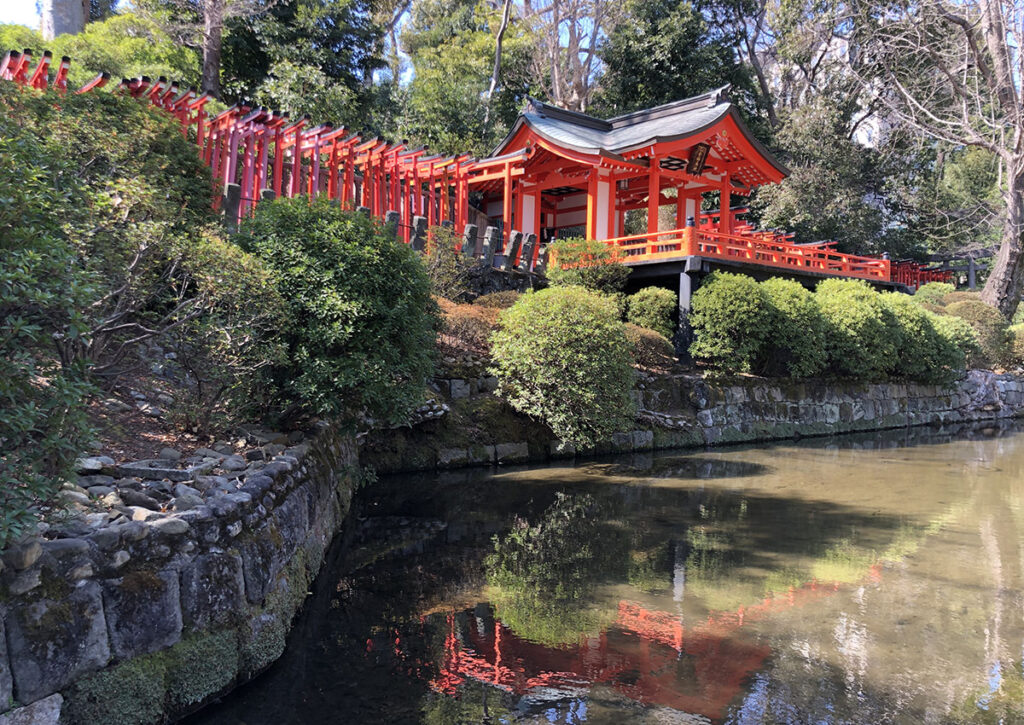
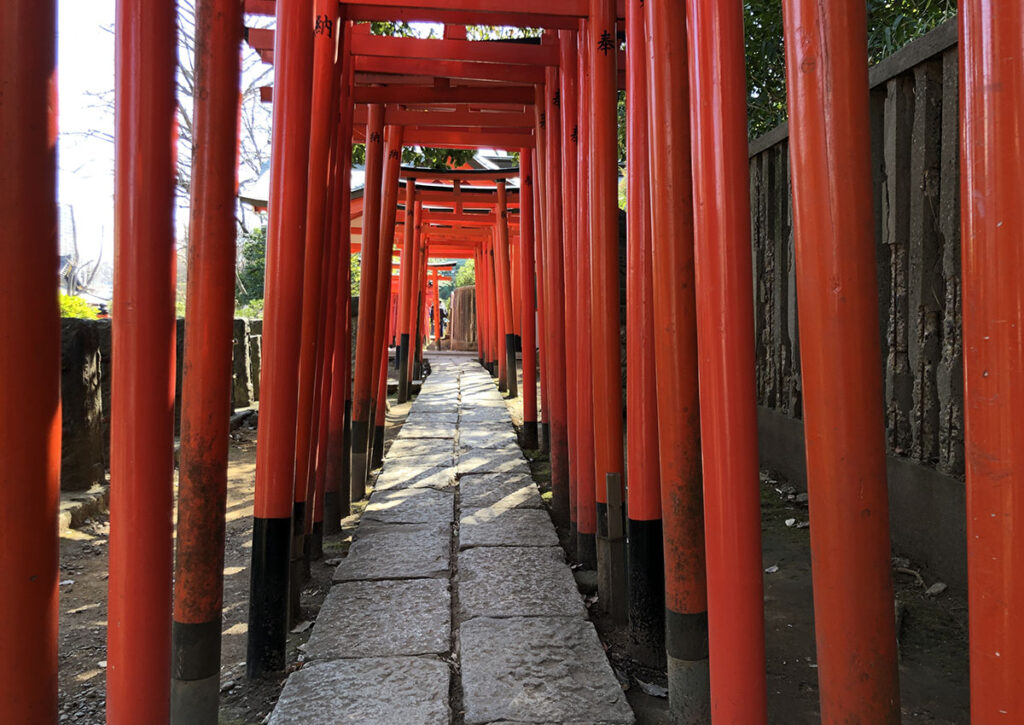
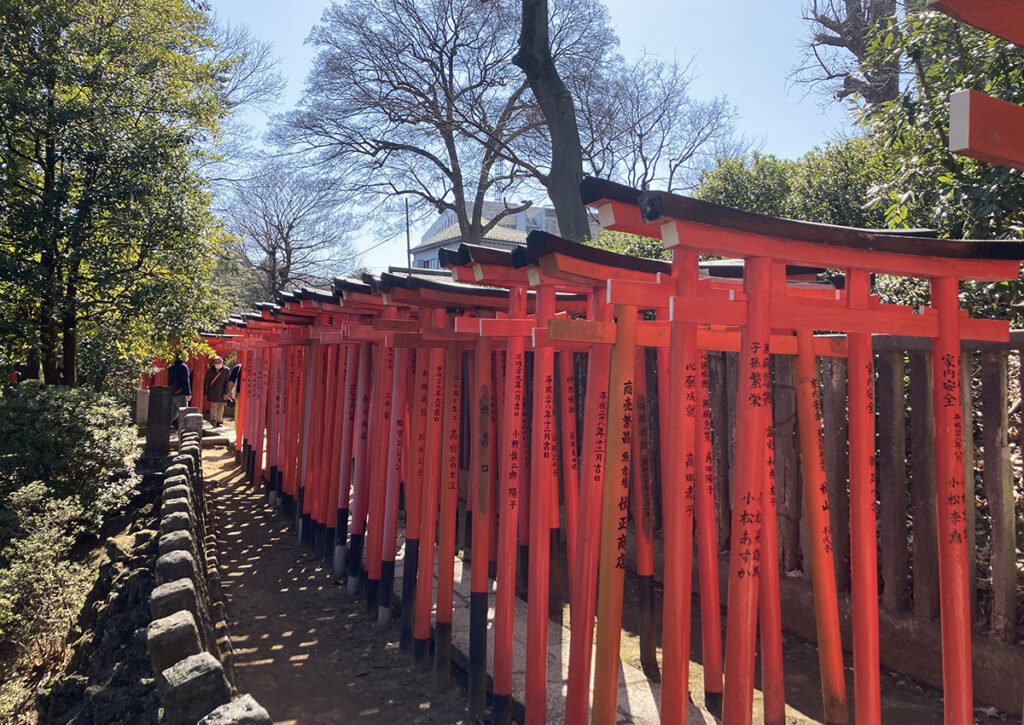
Otome Inari
After passing through the torii gates, you will reach the Otome Inari.
The name Otome (Maiden) Inari stuck in modern times because women in their yakudoshi (bad luck year), which is 19, visited this shrine to ward off bad luck. Up until the Edo period, the shrine was called Ana (hole) Inari. Behind the shrine there is a hole, and people may have associated the wind hole with women.
Although a god of agriculture, it is also known for its blessings for marriage, perhaps because of the name ‘Otome’.
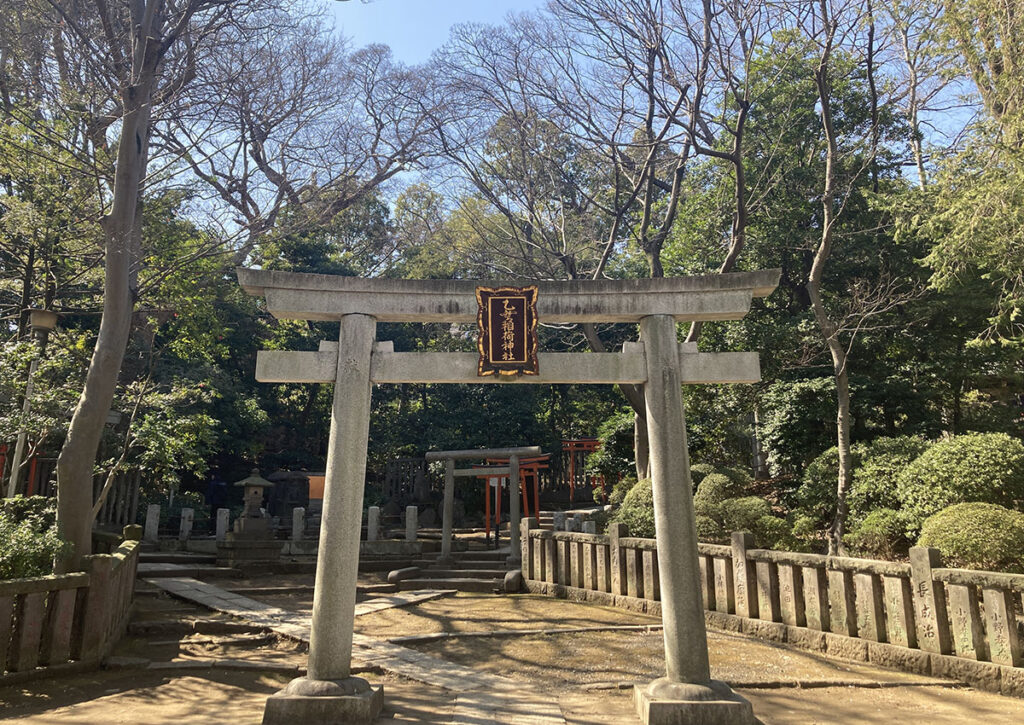
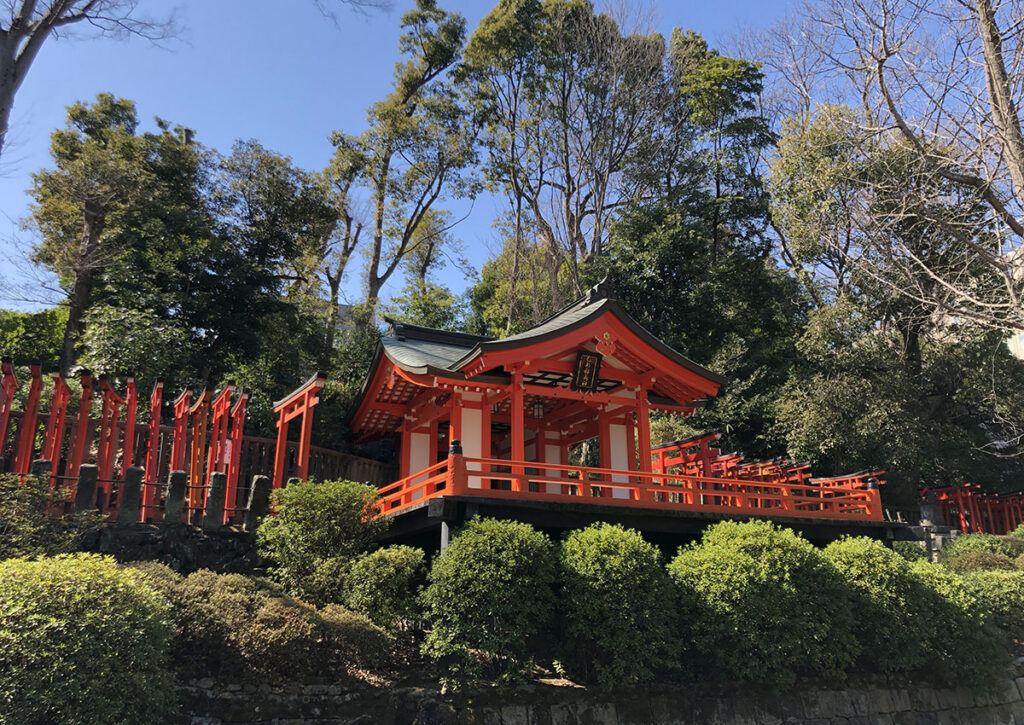
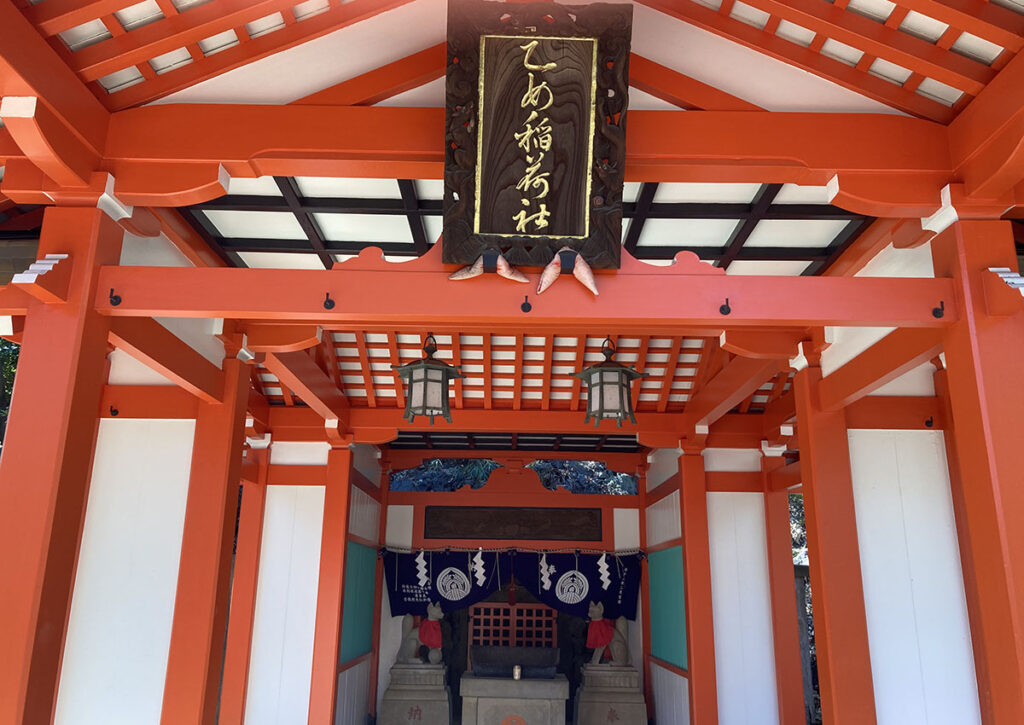
Koshin Tower
In the precincts of the shrine, six Koshin towers (pagodas) are enshrined in a hexagonal shape, back to back. It is said that the pagodas were originally built at various street corners, but after the Meiji era when roads were widened, they were brought to Nezu-jinja Shrine.
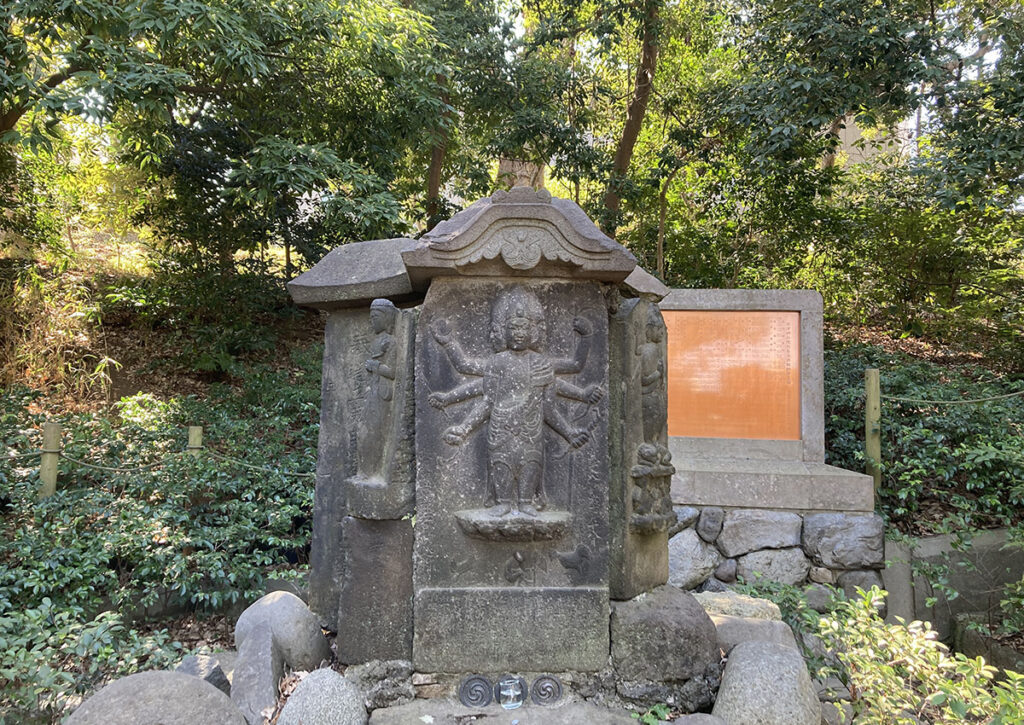
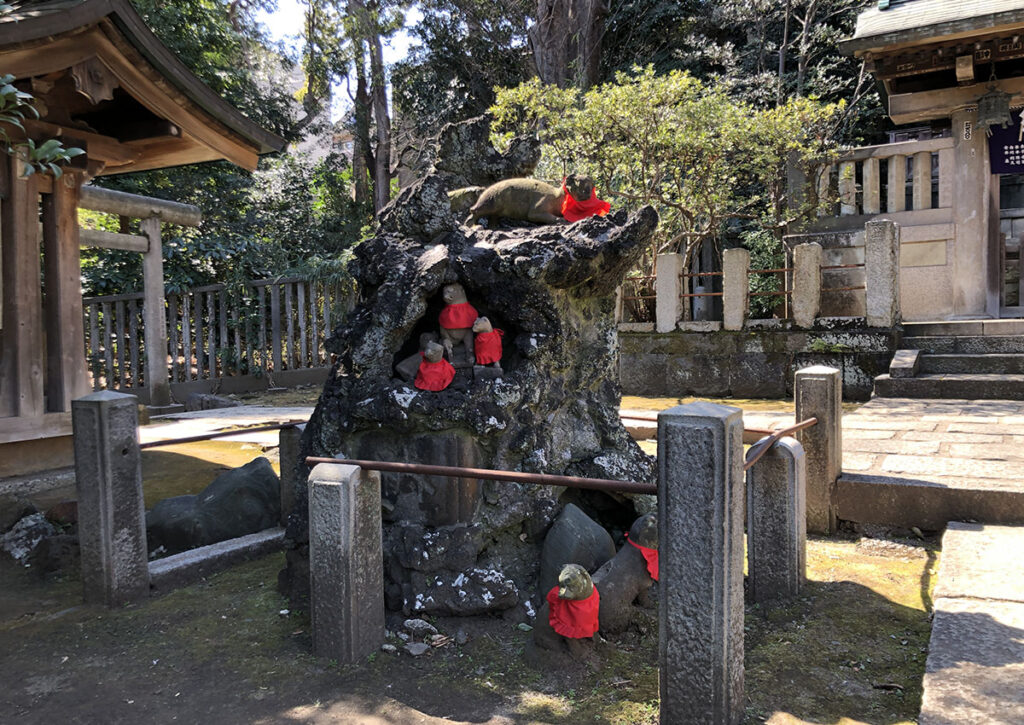
Azalea Garden
There is also an azalea garden in the precinct, where 3,000 azaleas are in full bloom around April. Since there are 100 different kinds of azaleas with different blooming periods, visitors can enjoy the flowers for a long time.
The ‘Bunkyo Azalea Festival’ is held every year from early April to May, with plant markets and antique markets held in the precincts, as well as performances such as Nezu Gongen drums and Naginata demonstration.
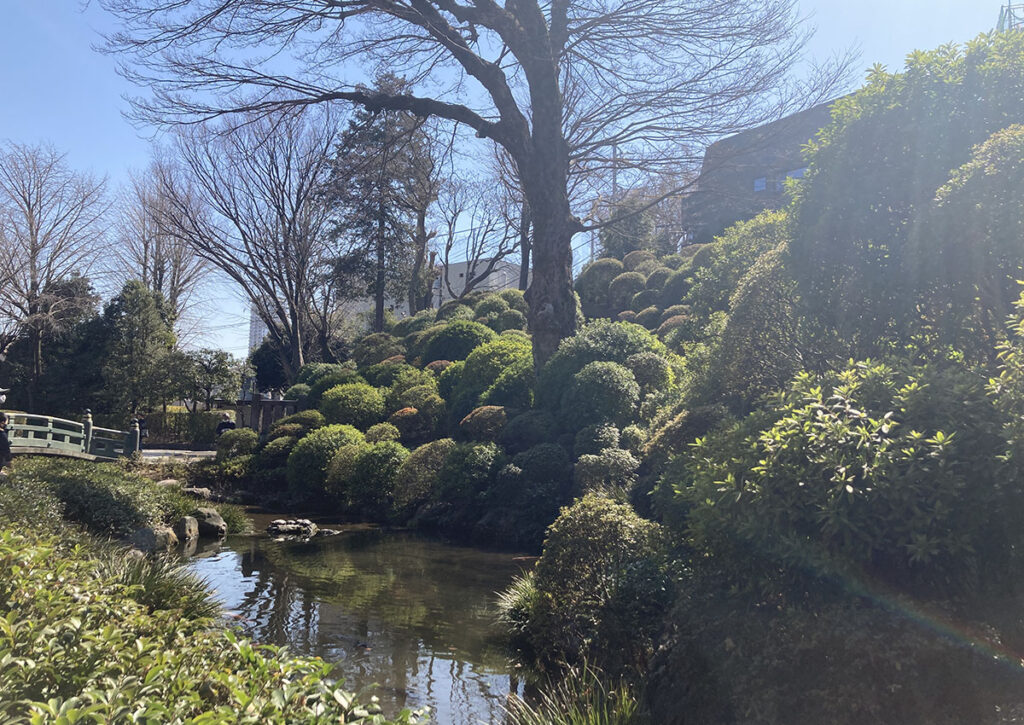
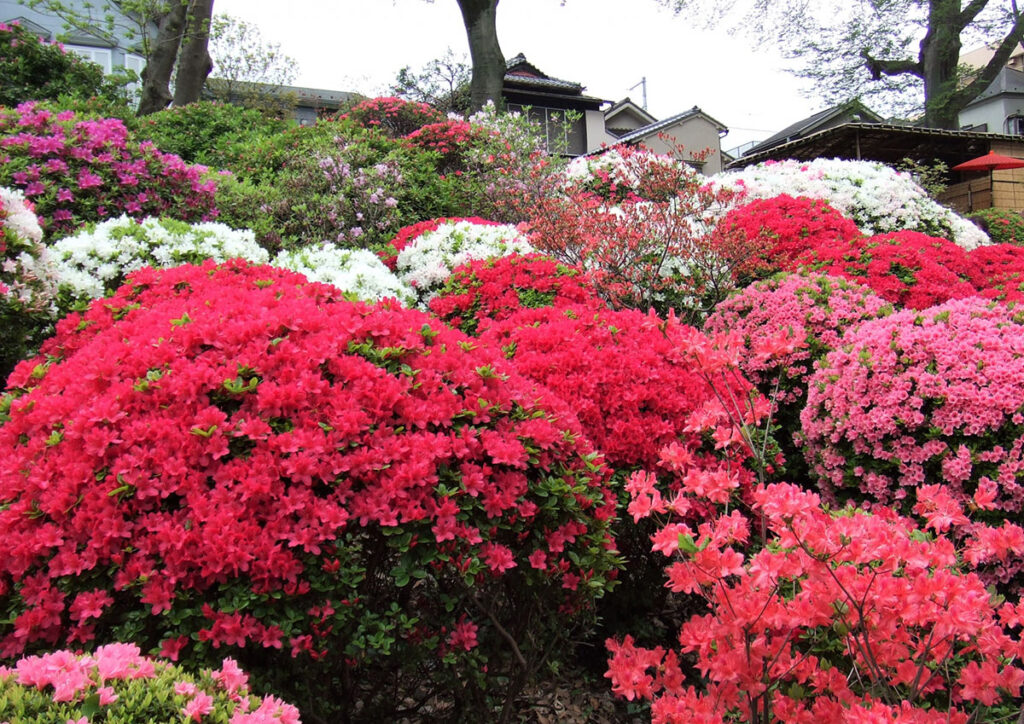
Annual Grand Festival
The annual festival held on Saturday and Sunday in mid-September has a history of more than 300 years, and along with the Sanno Festival and Kanda Festival, is one of the three major festivals of Edo. The festival attracts about 30,000 people every year. About 100 stalls open, and there are dance performances, Sanza-no-mai and Urayasu-mai, which are designated as Intangible Cultural Heritage by the Bunkyo Ward.
The main festival is held once every four years, and only on that year, one of the three mikoshi (portable shrine) dedicated by Tokugawa Ienobu is carried in turn.
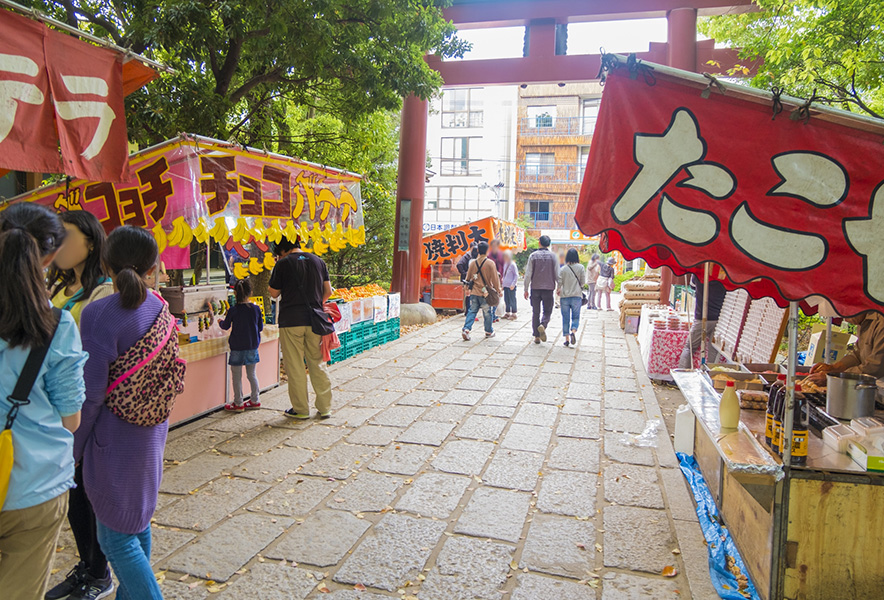

Access to Nezu-jinja
1-28-9 Nezu, Bunkyo City, Tokyo
TEL : +81-3-3822-0753
Parking around Nezu-jinja
Nezu-jinja Official Website
official site:http://www.nedujinja.or.jp/
